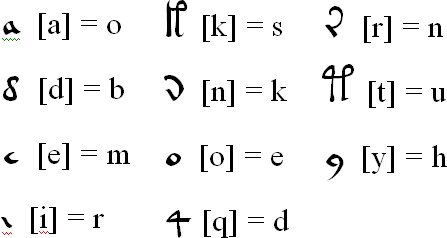The APOD (Astronomy Picture of the Day) for 31st January 2010 was the Voynich Manuscript’s page f67r1… yet again. By which I mean it was first featured there in 2002, and then again in 2005, and now here it is for the third time round. Before very long, the 2010 discussion page had accumulated a hundred comments and several thousand views: and didn’t it all just annoy the heck out of me.
The overwhelming majority of comments that have been left there are basically the kind of superficial semi-snarky stuff that gee-whiz bloggers who stumble upon the VMs tend to fire and forget: you know… from a twin universe / a board game / you need 3d glasses to read it / language of the birds / solar eclipse / solar calendar / compass rose / herbal written in an “obscure form of Gaelic” / autistic author / mirrored text / language of the Cathars / “lunar phase mandala related to alchemy” / written ” by a snoutband of suspicious blood” / early sci-fi author / Macedonian “after-oak” / the 24 cardinal directions of Fenshui (and so forth). Basically, a load of ingenious and observant people reinventing a century’s worth of dud wheels, all of them simultaneously square and punctured. Sorry to go all curmudgeonly on you, but how is this in any way a positive assistance to the whole VMs research debate?
The only genuinely thoughtful commenter was Neal Brodsky, who wrote: “The text appears to have been set down in a 15th century western European cursive script. The language itself has elements in common with medieval Germanic languages. It would be difficult and perhaps a bit bold to substantiate any further claims about the nature of this MS.” Which is fair enough, but does make it look as though the taxi dropped him off at completely the wrong party. 🙁
I just don’t know: in the same way that Egyptologists honestly don’t need yet another conceptual theory on the Pyramids in order to advance, I can’t honestly say that Voynich researchers need any more off-the-cuff femto-theories gaily geysered up by shooting-from-the-hip clicksperts. In my opinion, what we need now is to construct proper, tightly-focused (yet eminently do-able!) research questions that stand a reasonable chance of advancing our knowledge by being answered, such as:-
- What precisely was the original order of the Voynich Manuscript’s pages? [and how to go about working this out?]
- What was the ‘alpha’ [original] state of those pages where we can apparently see layering? [and why were the layers added?]
- How did Voynichese evolve during the manuscript’s construction [and what does that tell us about Voynichese?]
- What did the now-unreadable marginalia originally say? [and what happened to them to make them unreadable?]
- Where was the Voynich Manuscript between 1450 and 1600? [and who owned it?]
All of which is to say that I think the time has long since passed for Voynich research to leave puberty behind, i.e. that it should stop trawling historical byways for half-cocked answers, but instead put its collective efforts towards developing workable questions. OK, maybe that’s not a PR-friendly vote-catcher of a manifesto to nail to the church door, but at least it’s an honest statement of principle, make of it what you will. 🙂

